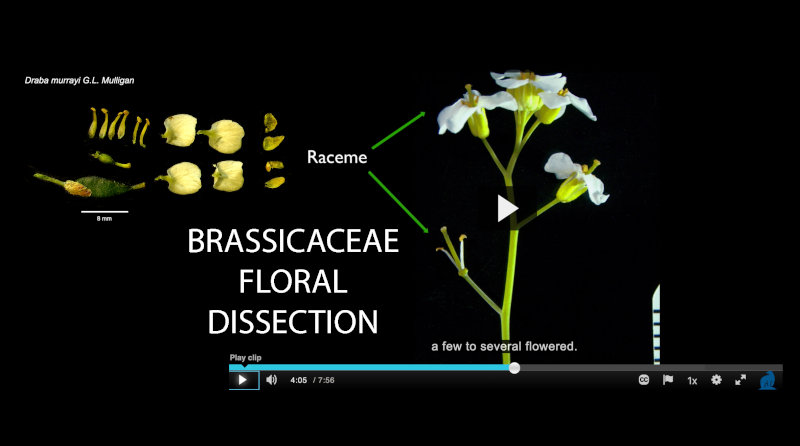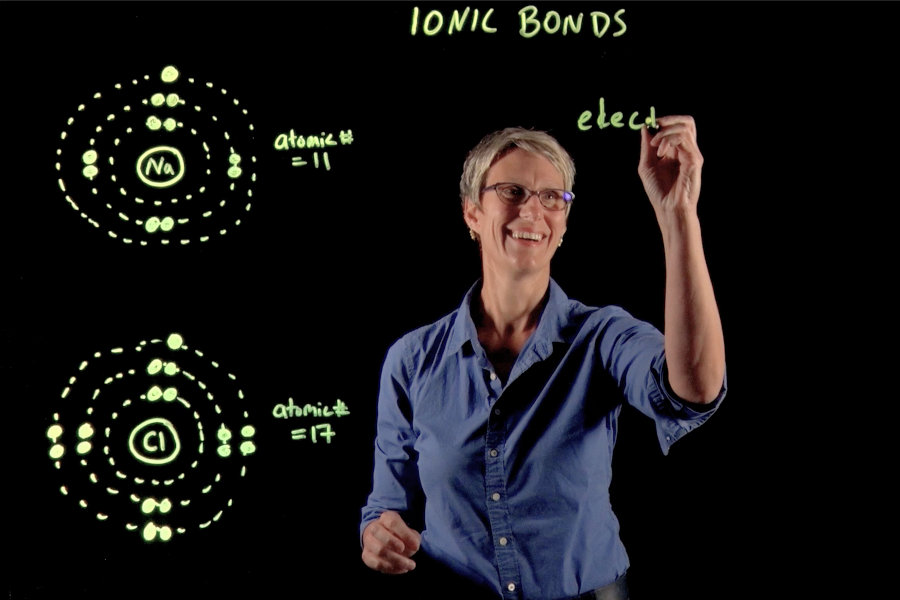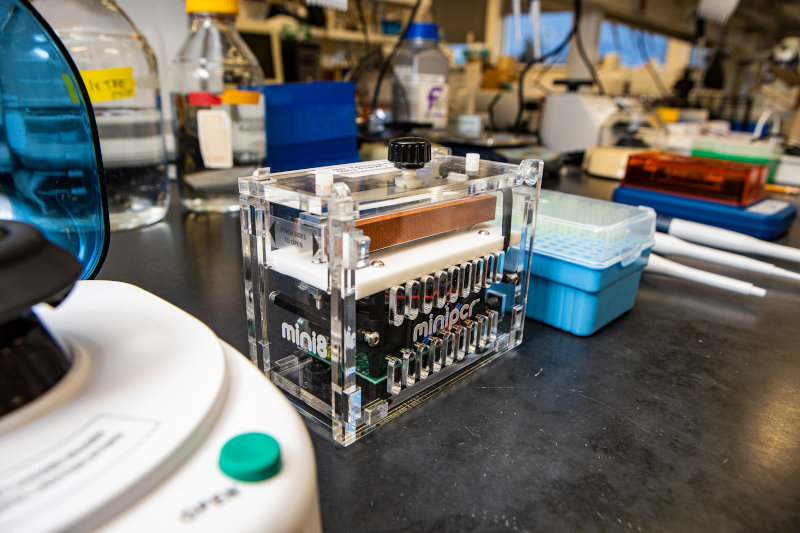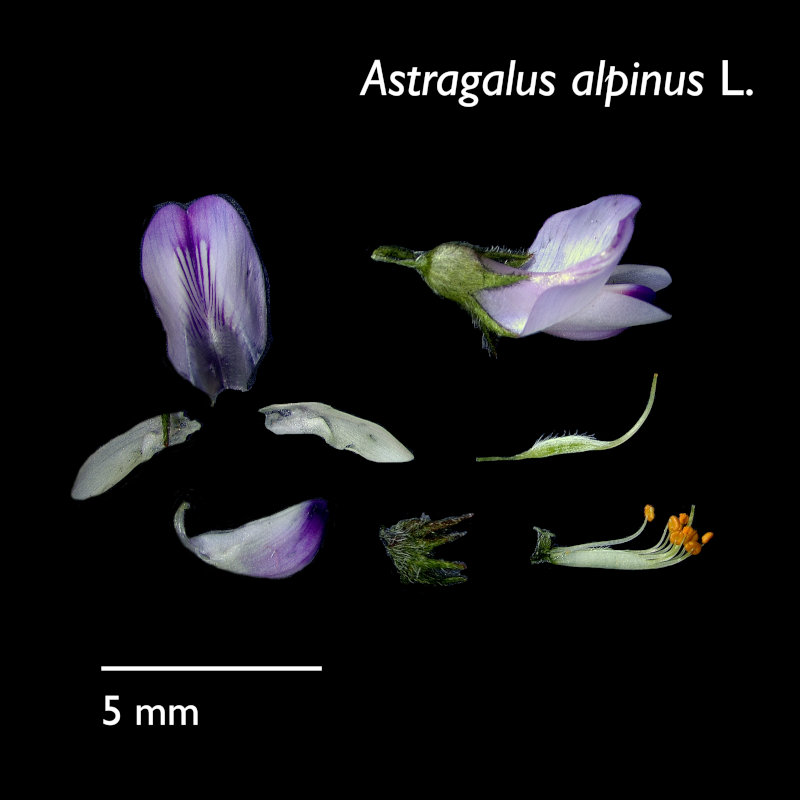Biology Online
Online Degree Programs
All the undergraduate programs in Biological Sciences may be completed online:
- Bachelor of Arts (B.A.) in Biological Sciences
- Bachelor of Science (B.S.) in Biological Sciences (basic program only; concentrations are not yet available for the online B.S.)
- Minor in Biological Sciences
Online Courses
The Biology and Wildlife Department offers many asynchronous online courses throughout the year, listed below. Asynchronous classes have no scheduled meeting time. In addition, some of our classes have a synchronous online Zoom option. Online courses may be used to complete the biology degree program fully online, or to supplement a primarily in-person degree program by providing scheduling flexibility.
With support from e-Campus at UAF, our faculty are leading the way in incorporating cutting-edge technologies in our virtual classrooms. Join us in exploring the biodiversity of Alaska and beyond, studying human anatomy and physiology, conducting your own independent research in behavioral neuroscience, sequencing DNA, and much, much more!

FALL - Classes offered asynchronous online
This course provides a laboratory experience emphasizing contemporary biological topics for transfer students who are not science majors and who have completed a natural science course with no laboratory section at another institution. The course content aligns with the laboratory section of BIOL F103X. Students who have completed BIOL F103X may not register for BIOL F101L.
Prerequisites: A university-level natural science course.
Fundamental principles of biology; emphasis on their application to humans in the modern world. Lectures, laboratory demonstrations, experiments and discussions of contemporary biological topics. For non-science majors; cannot be used as a biology elective by biological science majors.
Prerequisites: Placement in WRTG F111X; placement in MATH F105
Integrated view of human structure and function. Provides a foundation in relevant chemistry, cell biology, histology and unifying concepts. Covers integumentary, skeletal, muscular and nervous systems.
To register for this class you must also register for the Lab:
BIOL F111L - Anatomy & Physiology I Laboratory (0 credit)
Prerequisites: Placement in WRTG F111X; placement in MATH F105
Co-requisite: BIOL F111L
The first of a two-part course series for science majors, Fundamentals of Biology I covers the chemistry of life, cell structure and function, cellular energetics, cell division, genetics, and evolution.
Prerequisites: Prerequisites: Placement in WRTG F111X; placement in MATH F151X; CHEM F105X (course may be taken concurrently). Recommended: High school biology.
To register for this class you must also register for the Lab:
BIOL 115L - Fundamentals of Biology I Laboratory (0 credit)
The second of a two-course series for science majors, Fundamentals of Biology II covers speciation, organismal diversity, form and function of plants and animals, and ecology.
Prerequisites: Placement in WRTG F111X; placement in MATH F151X; CHEM F105X (may be taken concurrently); BIOL F115X.
To register for this class you must also register for the Lab:
BIOL 116L - Fundamentals of Biology II Laboratory (0 credit)
Plant biology including plant form and function (morphology, physiology and development),
ecology (including interactions with herbivores, pollinators and microbes), conservation,
evolution and economic botany. Emphasis on vascular plants (particularly angiosperms)
but includes comparisons with nonvascular plants.
Prerequisites: BIOL F115X; BIOL F116X.
Fundamentals of microbiology. Survey of the microbial world, interactions between microbes and host, microbial human diseases, the environmental and economic impact of microorganisms. Provides background in basic and applied microbiology with emphasis on the role microorganisms play in human health and life. Available at UAF Community and Technical College.
OPEN REGISTRATION to all students.
An introduction to the structure and function of cells. Topics include: the structure and function of cellular components, including proteins, membranes and organelles; understanding how cells communicate; and how information is processed in the cell via DNA replication, transcription and translation.
Prerequisites: BIOL F260; CHEM F105X; CHEM F106X (may be taken concurrently).
Basic principles in physiological, ecosystem, population and community ecology. Environmental factors and their influence on plants and animals. Structure, growth and regulation of populations. The ecosystem concept, biogeochemical cycles, and the structure and function of major terrestrial biomes.
Prerequisites: Prerequisites: BIOL F115X; BIOL F116X.
Physiology responses and adaptation to exercise in humans, emphasizing energy metabolism, adipose and lean tissue, central and peripheral components of oxidative metabolism and the environmental influences on these parameters.
Note: Course will be taught from a comparative (human and animal) perspective
Prerequisites: (BIOL F115X, BIOL F116X) or BIOL F310
Organization and function of the vertebrate nervous system from the subcellular to the organismal levels. Neural bases of sensations, specific behaviors and homeostasis. Applications of basic neurobiological research to pathological conditions. Examples taken mostly from the recent vertebrate literature.
BIOL F310; COJO F131X or COJO F141X.
Prerequisites: BIOL F310; COJO F131X or COJO F141X
(If you have had a year of Human Anatomy and Physiology, contact the instructor for a prerequisite override.)
Physiology and development of vascular plants, stressing the interrelationships between development, growth, water relations, photosynthesis, transport, and metabolism.
BIOL F115; BIOL F116; MATH F151X or higher; STAT F200X
Structure of plant and animal communities and their organization. Structuring forces
of
competition, predation, herbivory, mutualisms, and the flow of energy and nutrients.
Latitudinal
gradients in species richness and biogeography. Student projects in this course may
satisfy the
capstone project requirement of the biological sciences degree.
Prerequisites: BIOL F371; WRTG F111X; WRTG F211X, WRTG F212X, WRTG F213X or
WRTG F214X.
Notes: This class has synchronous online meeting times; the lab is completed online.
The goal of this course is to introduce students to the genes-to-ecosystems framework and provide them a platform to use publicly available genomics data to address novel ecosystem questions. The genes-to-ecosystems framework demonstrates how genomic data can be used to address questions about ecosystem function across natural (soil, water), host (human, animal), and engineered (wastewater treatment plant) ecosystems. The course will emphasize knowledge and skills that can be transferable to academic, biomedical, and other career paths. Students will be able to fully satisfy their research capstone in biological sciences. Further, because this is an online asynchronous class, students will be able to achieve the learning objectives and the capstone requirements on their own time and in any location.
Prerequisites: BIOL F116X and (BIOL F240X or BIOL F342 or BIOL F457)
Physiology and development of vascular plants, stressing the interrelationships between development, growth, water relations, photosynthesis, transport, and metabolism.
Prerequisite: Graduate standing
SPRING - Classes offered asynchronous online
This course provides a laboratory experience emphasizing contemporary biological topics for transfer students who are not science majors and who have completed a natural science course with no laboratory section at another institution. The course content aligns with the laboratory section of BIOL F103X. Students who have completed BIOL F103X may not register for BIOL F101L.
Prerequisites: A university-level natural science course.
Fundamental principles of biology; emphasis on their application to humans in the modern world. Lectures, laboratory demonstrations, experiments and discussions of contemporary biological topics. For non-science majors; cannot be used as a biology elective by biological science majors.
Prerequisites: Placement in WRTG F111X; placement in MATH F105
Integrated view of human structure and function. Continuation of Human A&P I. Covers endocrine, cardiovascular, lymphatic, immune, respiratory, digestive, urinary and reproductive systems.
Prerequisite: BIOL F111X
Co-requisite: BIOL F112L
The first of a two-part course series for science majors, Fundamentals of Biology I covers the chemistry of life, cell structure and function, cellular energetics, cell division, genetics, and evolution.
Prerequisites: Prerequisites: Placement in WRTG F111X; placement in MATH F151X; CHEM F105X (course may be taken concurrently). Recommended: High school biology.
To register for this class you must also register for the Lab:
BIOL 115L - Fundamentals of Biology I Laboratory (0 credit)
The second of a two-course series for science majors, Fundamentals of Biology II covers speciation, organismal diversity, form and function of plants and animals, and ecology.
Prerequisites: Placement in WRTG F111X; placement in MATH F151X; CHEM F105X (may be taken concurrently); BIOL F115X.
To register for this class you must also register for the Lab:
BIOL 116L - Fundamentals of Biology II Laboratory (0 credit)
Introduction to biomedical research on compulsive-like mice, including data collection, data analysis, and interpretation of results. Learn about obsessive-compulsive disorder in humans and how animal research has the potential to contribute to improving the human condition.
Prerequisites: Prerequisites: High school diploma, junior or senior standing in high school with a cumulative and science GPA of at least 3.0 with biology and chemistry course grades of at least 3.0.Fundamentals of microbiology. Survey of the microbial world, interactions between microbes and host, microbial human diseases, the environmental and economic impact of microorganisms. Provides background in basic and applied microbiology with emphasis on the role microorganisms play in human health and life. Available at UAF Community and Technical College.
OPEN REGISTRATION to all students.Principles of inheritance; physiochemical properties of genetic systems.
Prerequisites: Prerequisites: BIOL F115X; BIOL F116X; CHEM F105X; MATH F151X; LS F101X or successful completion of library skills competency test.
Classification of flowering plants with emphasis on Alaskan flora; familiarity with taxonomy (identification, nomenclature, classification), evolution (speciation, reproductive biology, adaptation, convergence, biogeography) and phylogenetics (morphology and molecules). Lab emphasizes learning representative families and genera of Alaskan flora using keys and manuals.
Morphology and physiology of microorganisms. The role of these organisms in the environment and their relationship to humans. Concepts of immunology. Laboratory stresses aseptic techniques for handling microorganisms.
Major groups of fishes, emphasizing fishes of northwestern North America. Classification
structure, evolution, general biology and importance to man.
Prerequisites: BIOL F116X
Comprehensive biomedical research on compulsive-like mice, including data collection, data analysis, and interpretation of results. Learn about obsessive-compulsive disorder in humans and how animal research has the potential to contribute to improving the human condition. Complete the Biology Capstone requirements including writing a full-length scientific manuscript.
Prerequisites: Prerequisites: Junior or senior undergraduate standing.This course focuses on the role of microorganisms in environmentally-relevant processes including bioremediation of pollutants, biogeochemical cycling, corrosion and wastewater treatment, including current methods for studying microbial diversity and function.
Prerequisites: BIOL F115X; BIOL F116X, BIOL F342; CHEM F105X, CHEM F106X.
A problem-based learning and critical thinking approach to modern methods in landscape
ecology, including geographic information systems, remote sensing, modeling, software
and the
Internet. Graduate students are expected to help undergraduates with problems and
questions.
Prerequisites: BIOL F371; COJO F131X or COJO F141X.
Patterns and processes of evolutionary change. Covered topics include microevolutionary processes, population genetics, quantitative genetics, fitness and adaptation, phylogenetics, speciation and macroevolutionary pattern. The conceptual framework of evolutionary biology is used to understand basic and applied issues in the life sciences, biomedicine, and agriculture.
Prerequisites: Prerequisites: BIOL F260; STAT F200X (may be taken concurrently) or STAT F300 (may be taken concurrently).Principles in ecosystem, population, and community ecology of the boreal forest. The
course integrates boreal forest ecology with understanding of how to access and analyze
online data using data tools. Student projects in this course may satisfy the capstone
project requirement of the biological sciences degree.
Prerequisites: BIOL F371, and STAT F200X or STAT F300
SUMMER
Integrated view of human structure and function. Provides a foundation in relevant chemistry, cell biology, histology and unifying concepts. Covers integumentary, skeletal, muscular and nervous systems. 12 weeks.
To register for this class you must also register for the Lab:
BIOL F111L - Anatomy & Physiology I Laboratory (0 credit)
Prerequisites: Placement in WRTG F111X; placement in MATH F105
Integrated view of human structure and function. Continuation of Human A&P I. Covers endocrine, cardiovascular, lymphatic, immune, respiratory, digestive, urinary and reproductive systems. 12 weeks.
Prerequisites: Prerequisites: BIOL F111X.
To register for this class you must also register for the Lab:
BIOL F112L - Anatomy & Physiology I Laboratory (0 credit)
This 4-week class is an introduction to several aspects of Alaska's unique flora. Class modules and hands-on exercises are designed to familiarize you with the identification, description, and morphology of our local flora.
Please note: Courses marked with an asterisk (*) meet synchronously, meaning that students are required to attend online lectures at specified times during the semester. All other courses are asynchronous, meaning there are no regularly scheduled class periods. Lectures are pre-recorded and available for viewing at the students' own pace within the guidelines of the course syllabus. For example, in many courses a bundle of lecture videos and assignments are released each week as a learning module to be completed within one week and before advancing to the next module. Exams are often required to be completed on specific dates as described in the syllabus.






